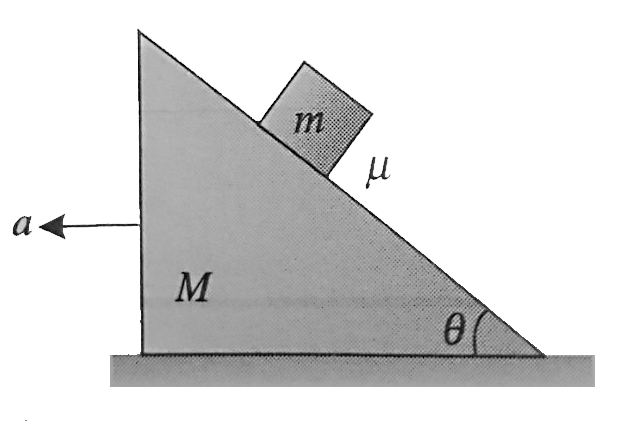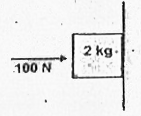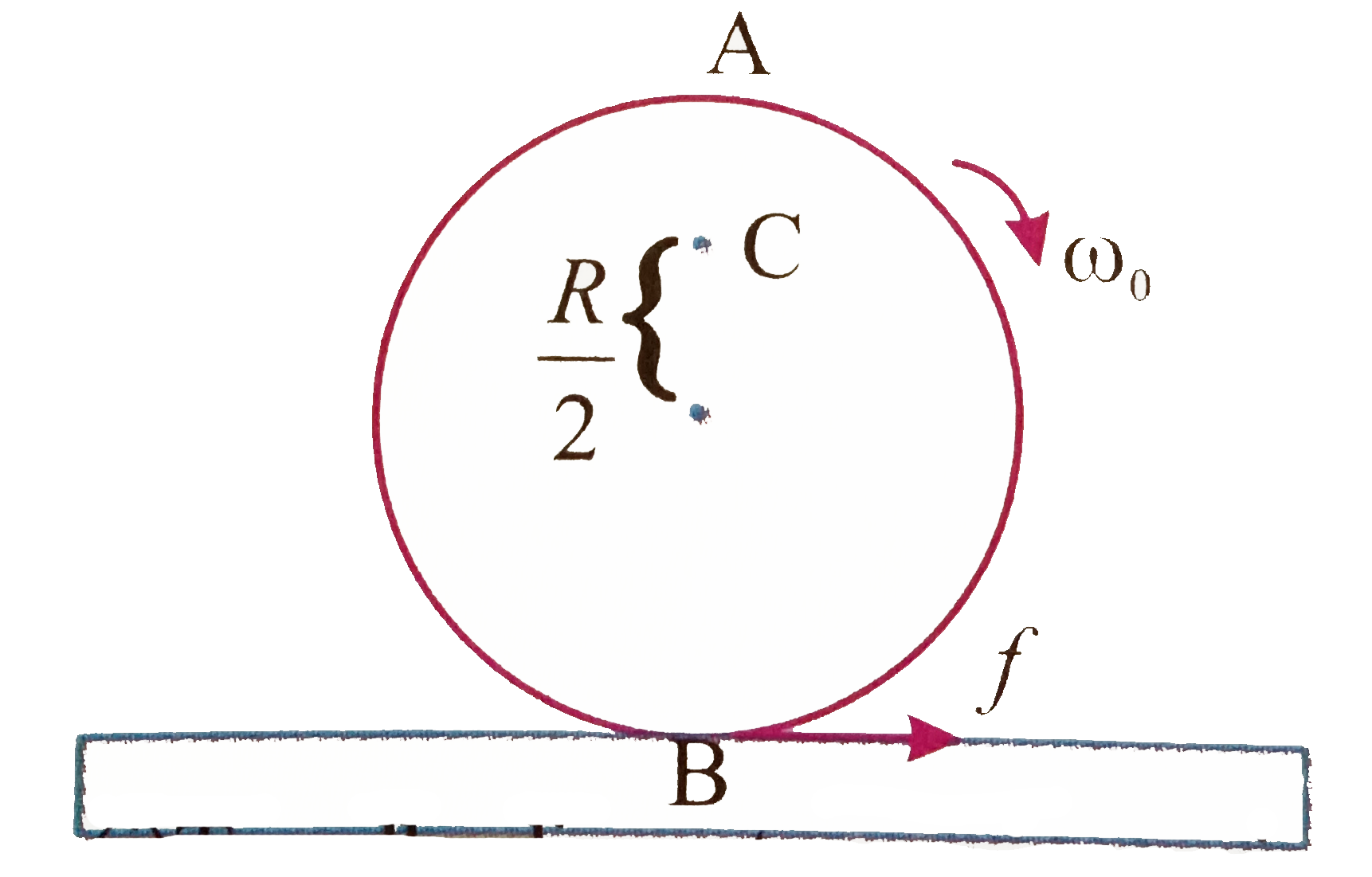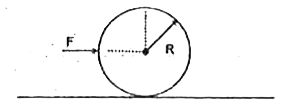In the above problem, direction of friction force is
towards left if F1 is applied
towards left if F2 is applied
towards right if F3 is applied
may be right or left or friction may be zero if F4 is applied
The correct Answer is:A, B, D
To determine the direction of the friction force in the given problem, we will analyze the situation step by step.
1. Identify the Forces Acting on the Spool:
- We have several forces acting on the spool: F1, F2, F3, and F4. Each of these forces can cause the spool to move and rotate in different directions.
2. Analyze the Motion Due to Applied Forces:
- When F1 is applied to the left, the spool will move left and rotate clockwise. The friction force will act to oppose this motion, which means it will act to the right.
- When F2 is applied to the right, the spool will move right and rotate anticlockwise. The friction force will act to oppose this motion, which means it will act to the left.
3. Consider the Effects of F3:
- If F3 is applied, the direction of the motion and rotation will depend on the magnitude of F3. If it is strong enough to move the spool to the left, it will rotate anticlockwise, and the friction force will act to the right to oppose this motion.
4. Evaluate the Case for F4:
- F4 can have varying effects depending on its direction and magnitude. If F4 causes the spool to move left and rotate anticlockwise, the friction will act to the right. If F4 is not strong enough to cause movement, friction may be zero.
5. Conclusion on the Direction of Friction:
- Based on the analysis, the direction of the friction force depends on the applied forces:
- For F1: Friction acts to the right.
- For F2: Friction acts to the left.
- For F3: Friction can act to the right or left depending on the net effect.
- For F4: Friction may be zero or act to the left or right depending on the conditions.
Final Answer:
The direction of the friction force can be:
- Rightward when F1 is applied.
- Leftward when F2 is applied.
- Indeterminate for F3 depending on its strength.
- Zero, leftward, or rightward for F4 depending on its effect.
- We have several forces acting on the spool: F1, F2, F3, and F4. Each of these forces can cause the spool to move and rotate in different directions.
- When F1 is applied to the left, the spool will move left and rotate clockwise. The friction force will act to oppose this motion, which means it will act to the right.
- When F2 is applied to the right, the spool will move right and rotate anticlockwise. The friction force will act to oppose this motion, which means it will act to the left.
- If F3 is applied, the direction of the motion and rotation will depend on the magnitude of F3. If it is strong enough to move the spool to the left, it will rotate anticlockwise, and the friction force will act to the right to oppose this motion.
- F4 can have varying effects depending on its direction and magnitude. If F4 causes the spool to move left and rotate anticlockwise, the friction will act to the right. If F4 is not strong enough to cause movement, friction may be zero.
- Based on the analysis, the direction of the friction force depends on the applied forces:
- For F1: Friction acts to the right.
- For F2: Friction acts to the left.
- For F3: Friction can act to the right or left depending on the net effect.
- For F4: Friction may be zero or act to the left or right depending on the conditions.
The direction of the friction force can be:
- Rightward when F1 is applied.
- Leftward when F2 is applied.
- Indeterminate for F3 depending on its strength.
- Zero, leftward, or rightward for F4 depending on its effect.
Topper's Solved these Questions
- BOOK - DC PANDEY ENGLISHCHAPTER - ROTATIONAL MOTIONEXERCISE - Comprehension Type Questions40videos
ROTATIONAL MOTION
- BOOK - DC PANDEY ENGLISHCHAPTER - ROTATIONAL MOTIONEXERCISE - Matrix Matching Type Questions16videos
ROTATIONAL MOTION
- BOOK - DC PANDEY ENGLISHCHAPTER - ROTATIONAL MOTIONEXERCISE - A Only One Option is Correct86videos
ROTATIONAL MOTION
- BOOK - DC PANDEY ENGLISHCHAPTER - ROTATIONAL MECHANICSEXERCISE - Subjective Questions2videos
ROTATIONAL MECHANICS
- BOOK - DC PANDEY ENGLISHCHAPTER - SEMICONDUCTORS AND ELECTRONIC DEVICESEXERCISE - More than One Option is Correct3videos
SEMICONDUCTORS AND ELECTRONIC DEVICES
Similar Questions
In the above problem, if coefficient of friction for both the spheres is same and let t1 and t2 be the times when pure rolling of solid sphere and of hollow sphere is started. Then
View Solution
A block of mass m is at rest relative to the stationary wedge of mass M. The coefficient of friction between block and wedge is μ. The wedge is now pulled horizontally with acceleration a as shown in figure. Then the minimum magnitude of a for the friction between block and wedge to be zero is:View Solution
Knowledge Check
- Question 1 - Select One
A girl press her physics text book against a rough vertical wall with her hand. The direction of the frictional force on the book exerted by the wall is
AdownwardsBupwardsCout from the wallDinto the wall
A block of mass 2 kg is pressed against a rigid vertical wall by a horizontal force of 100 N. If co-efficient of static and kinetic friction are each equal to 0.3 then find the magnitude and direction of frictional force on the block.
 View Solution
View Solution(i) Explain why friction is necessary to make the disc to roll in the direction indicated. (ii) Give the direction of frictional force at B, and the sense of frictional torque, before perfect rolling begins. (iii) What is the force of friction after perfect rolling begins?
 View Solution
View SolutionWork done by a frictional force is
View SolutionWork done by a frictional force is
View SolutionWork done by frictional force
View SolutionIn the previous problem. The friction force applied by ground on block B is
View SolutionA force F is applied horizontally on a cylinder in the line of centre as shown in the figure. The cylinder is on a rough surface of coefficient of fricition μ. The direction of the friction force acting on the cylinder will be
 View Solution
View Solution

